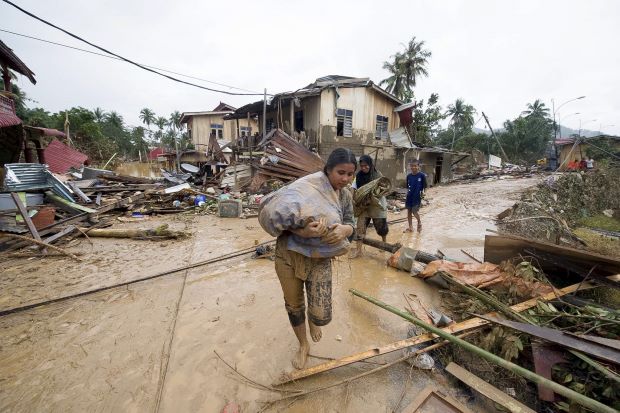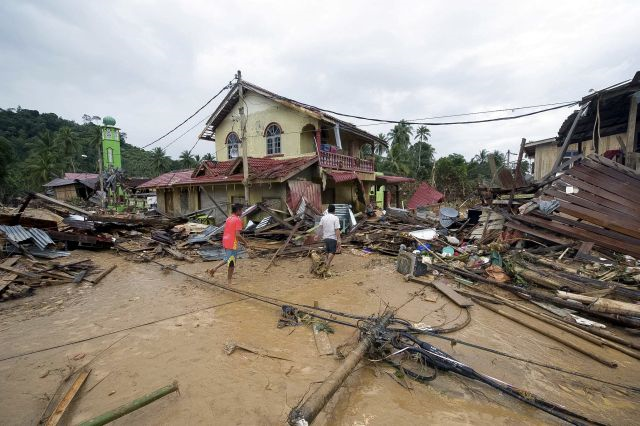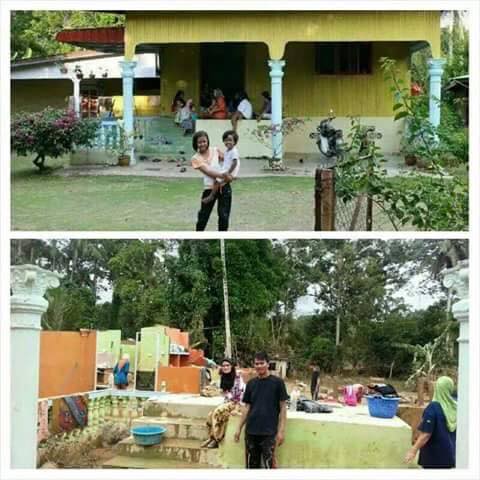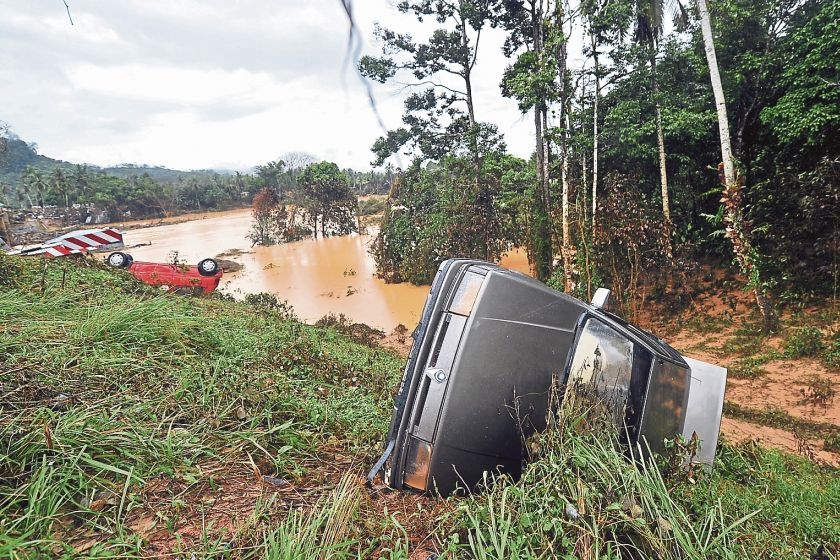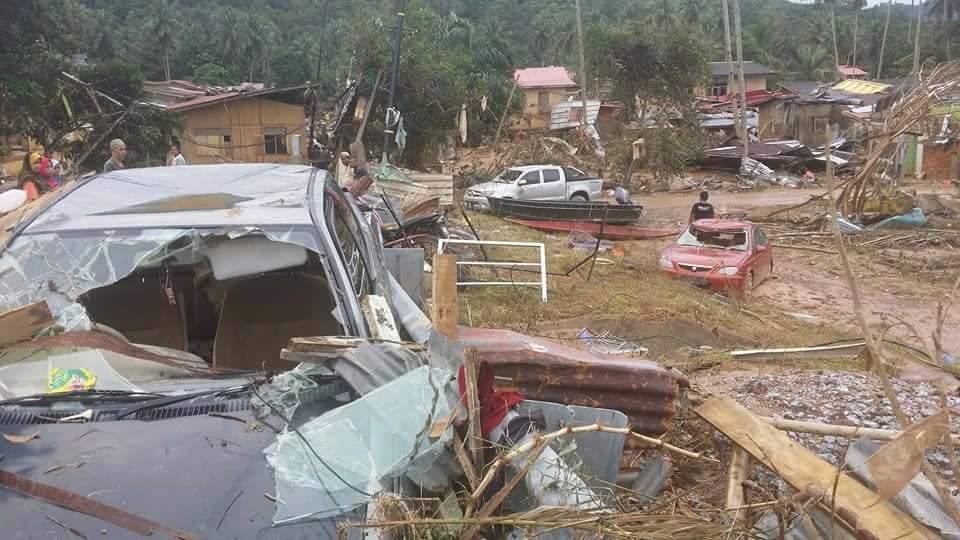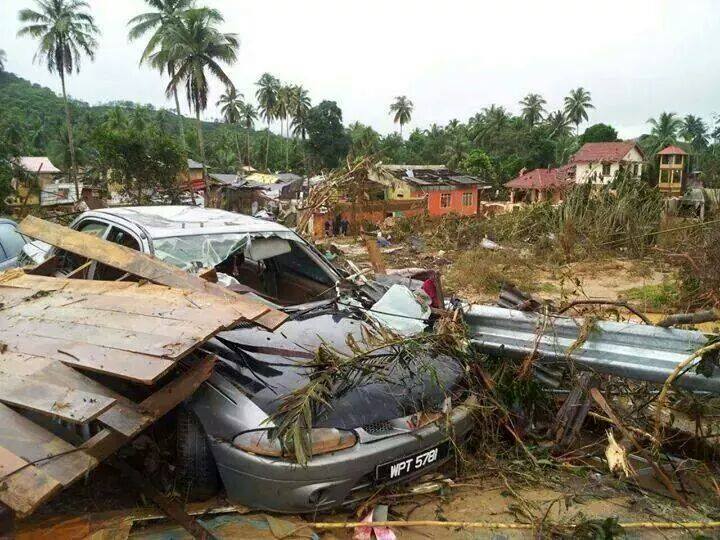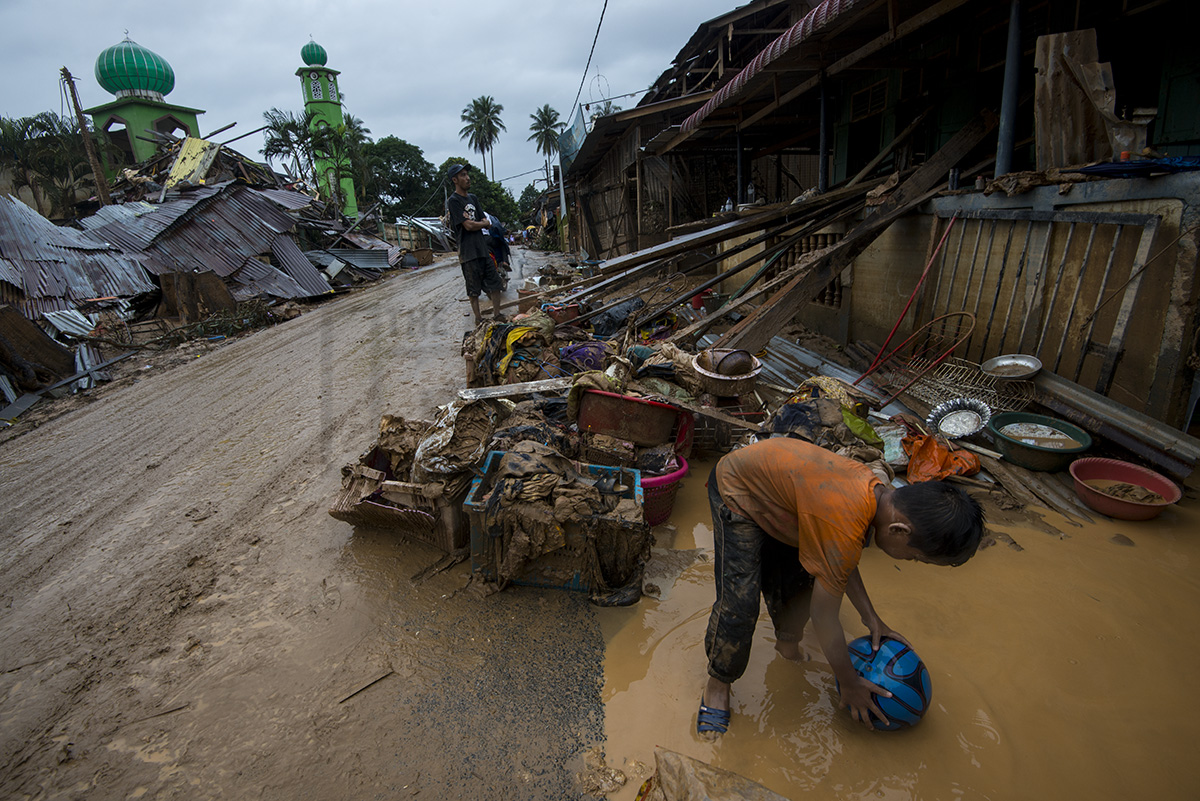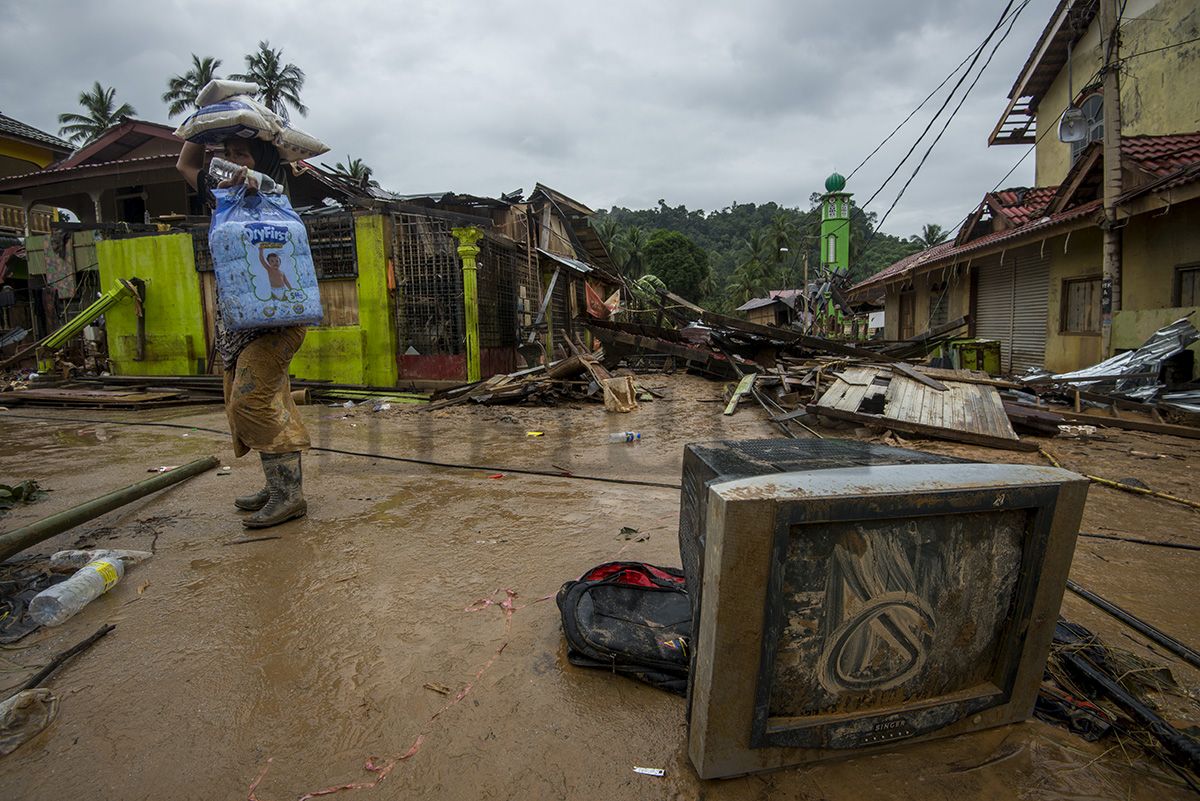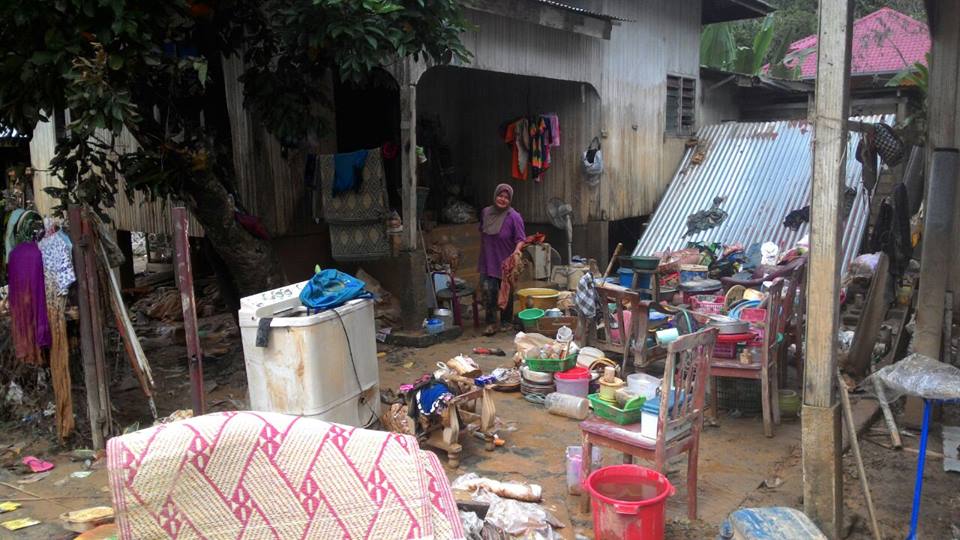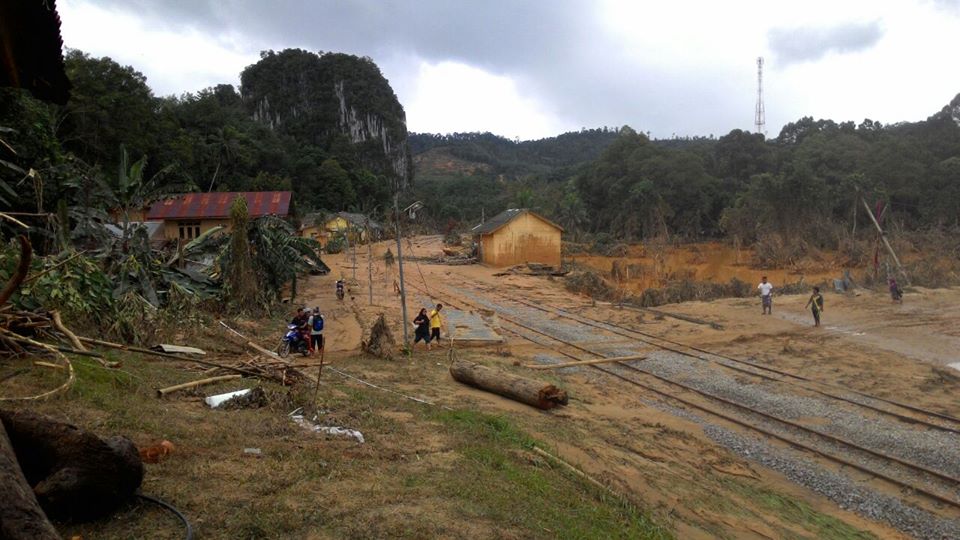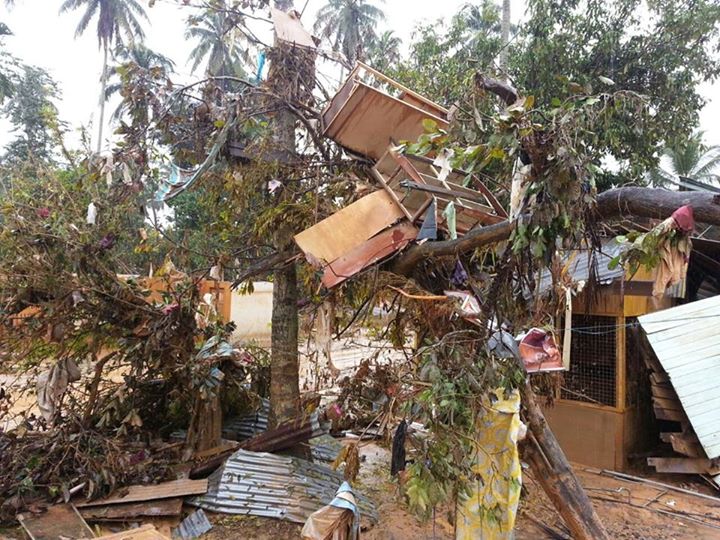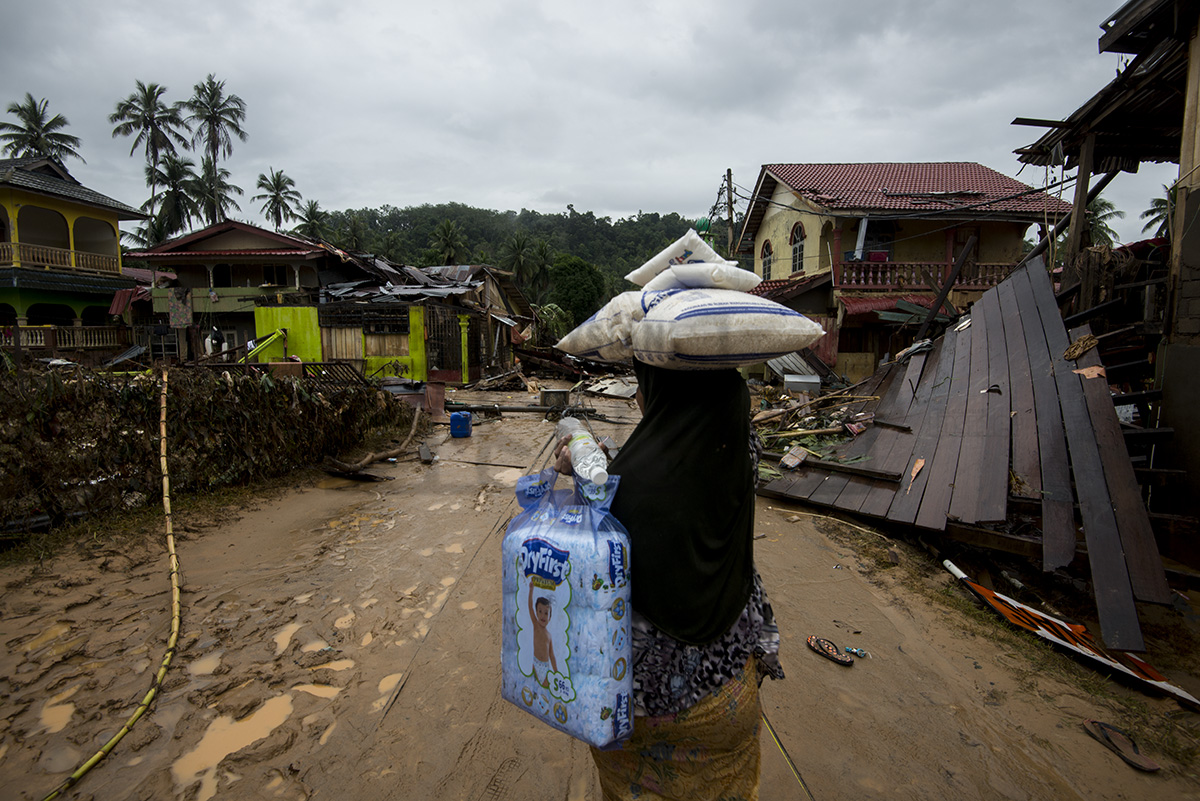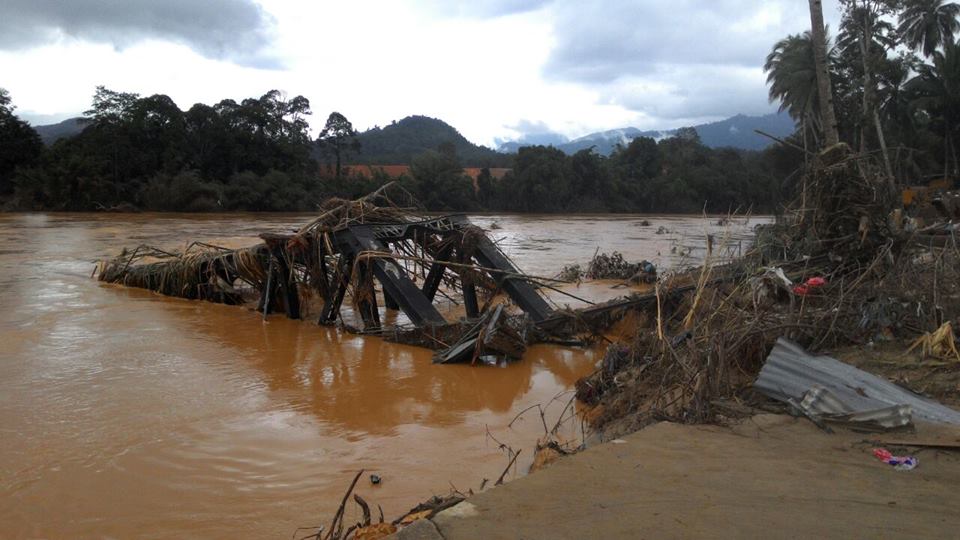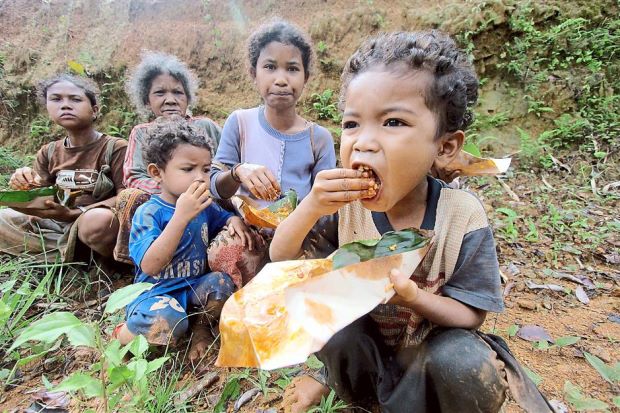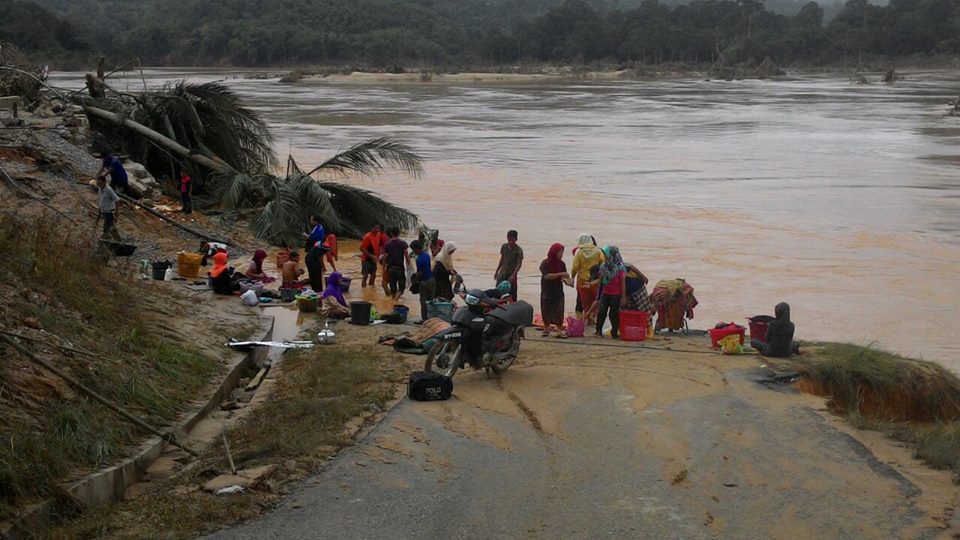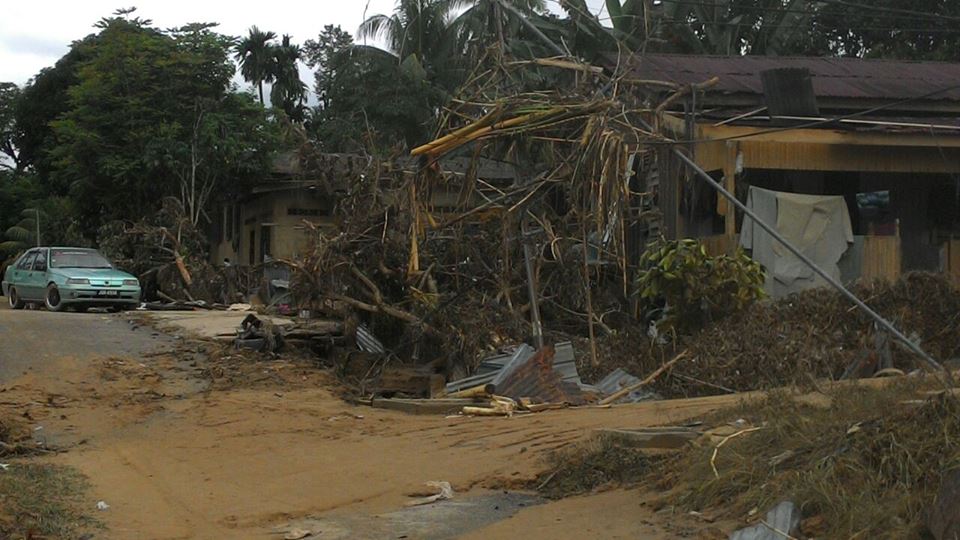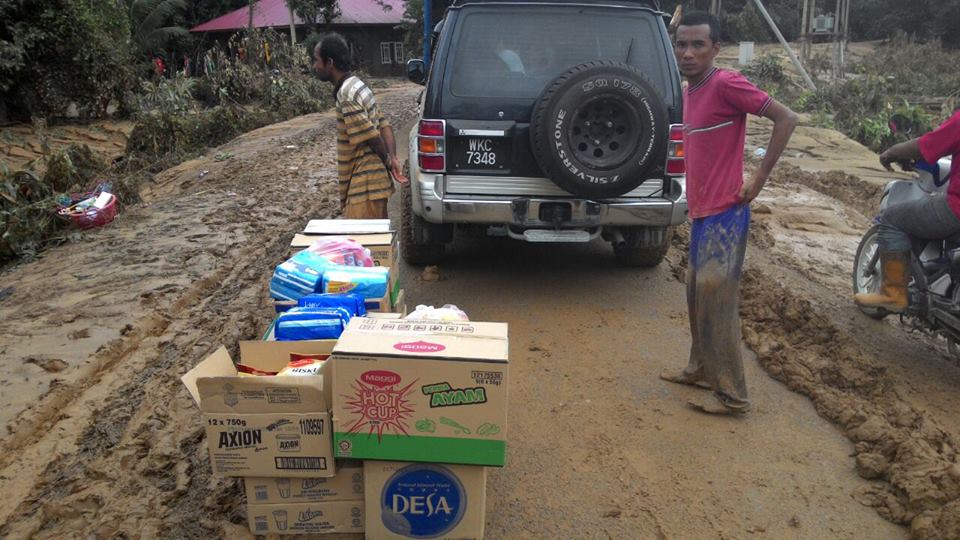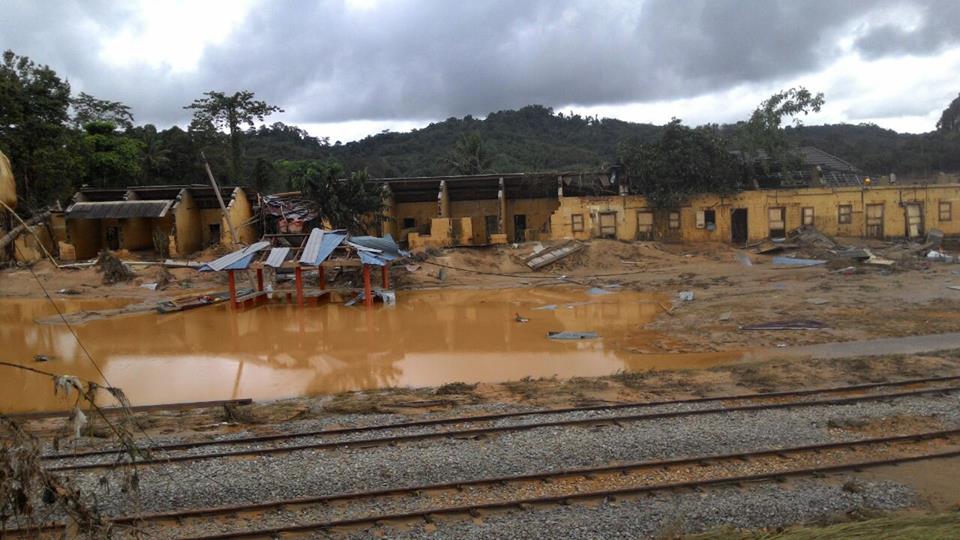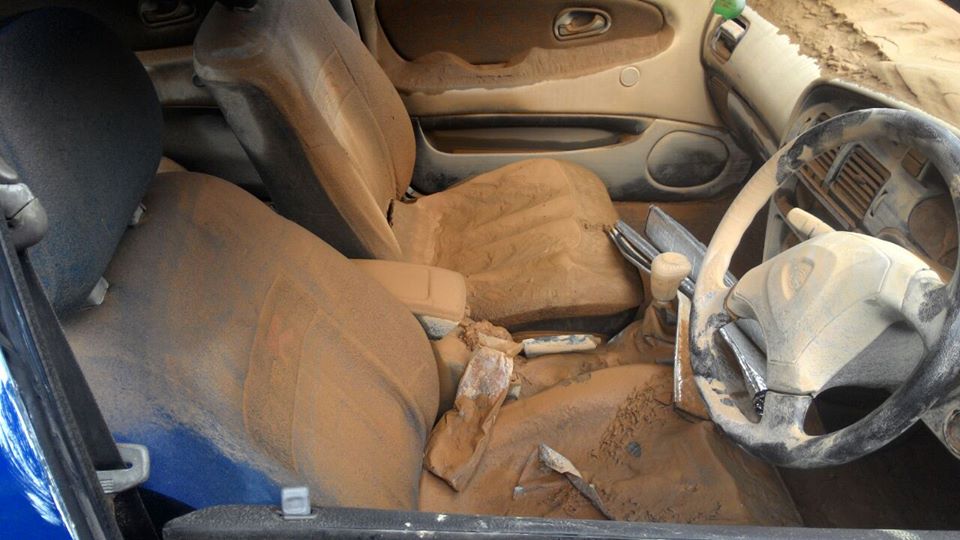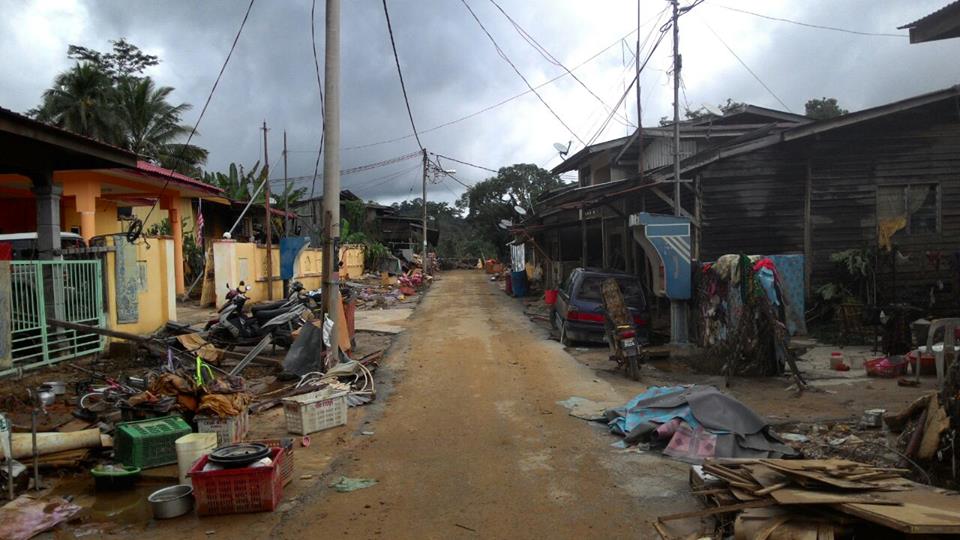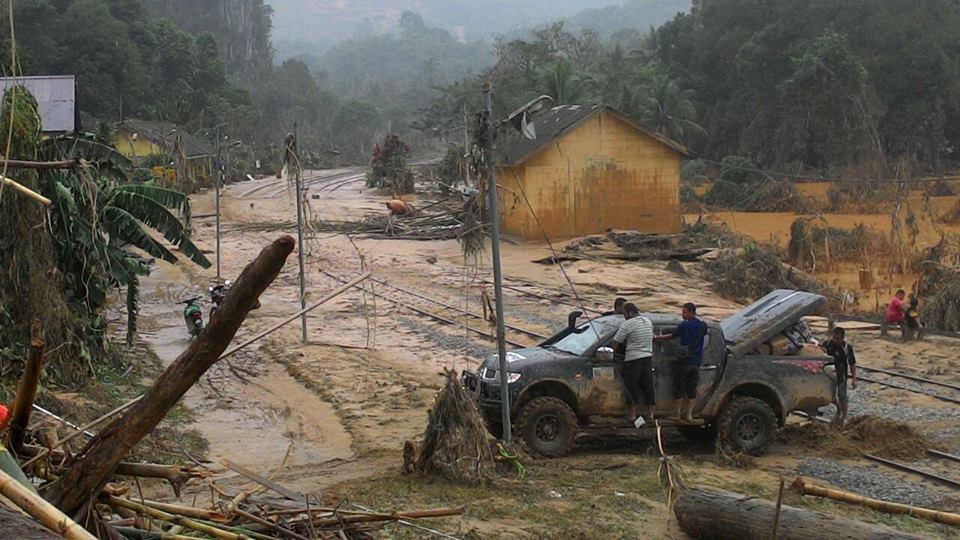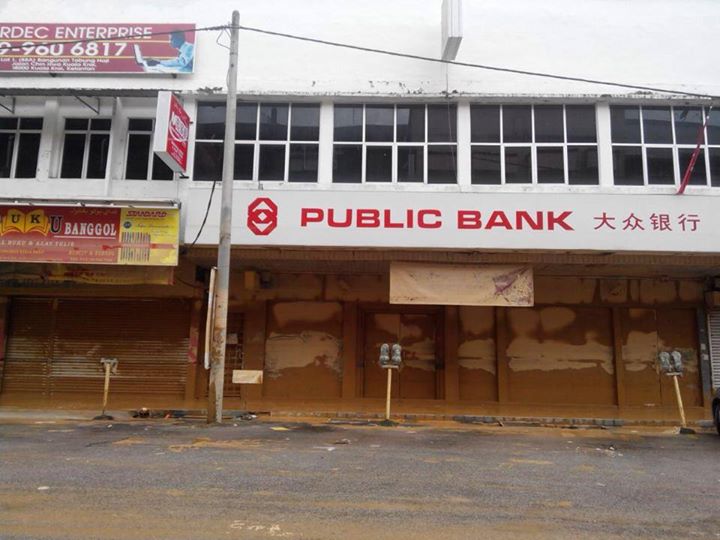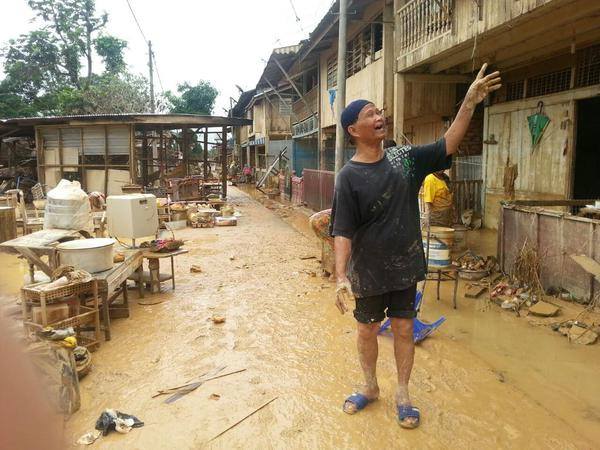[PHOTOS] What's Left Of The Villages After Being Submerged In Floodwaters For Days?
"Nothing's left," said a girl when she returned home to her ravaged house in Kelatan.
In Manik Urai of Kuala Krai, villagers who had to climb up hills to save themselves returned home to ruined shops, houses and suraus
In the remote village of Kampung Manek Urai Lama, Kuala Krai, in the east coast state of Kelantan, hundreds of villagers had been stranded for days up on the hills, having fled for higher ground when flood waters surged into their homes without warning.
No one in the village expected the flood to reach their homes. So when the water came rushing in at 3am last Tuesday, families scrambled to get to safety as frantic phone calls were made to the authorities to save them. But the rescue team wouldn’t, or couldn’t, come, and the villagers had only themselves to rely on. “The time when we needed them the most, the police, the firemen failed us,” Hayati said, her eyes brimming with unshed tears.
Vehicles that were drifted away in the current lay scattered and overturned
An overturned car washed away by the floods lies on the banks of Sungai Lebir.
Image via themalaymailonline.comMud, debris and filth covered every inch of surface. Some houses may still be intact, but they are now uninhabitable.
Covered in mud, a man walks out of his damaged house in Kampung Manek Urai Lama in Kuala Krai, Kelantan.
Image via themalaysianinsider.comA child helping his family to clean up their house in Kampung Manek Urai Lama.
Image via themalaysianinsider.com"Nothing's left," a villager who wants to be known as Hayati told The Malaysian Insider
A victim of the devastating east coast floods is seen here carrying aid in the town of Manik Urai in Kelantan, as the waters seem to have receded today.
Image via themalaysianinsider.com“Everything is gone. Our furniture, our clothes, our food. We have nothing left,” she said, as her brothers lifted up the muddy remains of a wardrobe and dumped it in a heap in the street. “I can’t even imagine how my children will start school in the next few days, everything I’ve bought for them is destroyed,” Hayati (not her real name) said, her voice breaking.
In Tanah Merah, villagers have returned home but there is still no electricity nor water. The damage to the houses are so severe some are forced to sleep in tents and in their cars.
Picking up the pieces: Siti Khadijah Mohd Noor, 36, and her son Mohd Amri Lokman Mahasan, five, salvaging usable goods and material to rebuild her house at Manik Urai Lama near Kuala Krai in Kelantan.
Image via imgur.comFariza Salleh, 37, is putting up in a tent with six of her children outside her house at Kampung Batu Hitam here. She decided to return home, which is still without electricity or water, after staying at a relief centre for four days. She said the damage to her house was too much to bear and she decided to stay with her children in the dark tent with only a candle.
thestar.com.myAnother evacuee Razali Che Soh, 62, is sleeping in his car. “I left everything behind at home and I brought nothing with me. Just one pair of trousers and this dirty T-shirt,” the school gardener said.
thestar.com.myBut for some, there is nothing left to even salvage
“There’s nothing left for us to salvage,” a man from Kampung Manek Urai Lama said helplessly, as his relatives painstakingly tore apart the large yellow planks with a hammer and tossed them aside. “We’re just hoping for help from the government to rebuild this village, and maybe raise the roads leading to it so that this area won’t be inaccessible the next time there’s a flood.”
It is not only the mess that villagers have to face. They also have to find a way to pay for house repairs, buy new school supplies for their children, start their businesses from scratch.
A villager carrying donated rice and other necessities as she looks at the damaged caused by the flood in Kampung Manek Urai Lama.
Image via themalaysianinsider.comFariza, who sells drinks for a living, said she is worried about the safety of her children and school preparations. “My husband and I used to open up small booths to sell food. But, now all that has been wiped out by the flood. “How are we going to buy school uniforms and shoes for our children?” she asked. Fariza said her family wants to get a small portable cooking gas stove to feed her children.
thestar.com.myThe villages of orang asli communities were also cut off by the devastating flood, with no way for organisations to send them supplies except by helicopter. Government aid has not even arrived yet.
He said there were many groups and organisations ready to help but the problem was getting supplies to these villagers. He said there was little or no access to these villages and that government aid has also yet to reach them. “There needs to be helicopters, and organisation and planning to reach these villages.”
thestar.com.myThe 2,000 Temiar people who live in Gua Musang is believed to have lost everything. They may only have the clothes on their backs left.
Orang asli children finally getting some food after supplies were delivered by helicopter to an area near their inundated village in Gua Musang.
Image via imgur.comLawyer Siti Kassim, who is a member of the Bar Council’s Committee for Orang Asli Rights, was concerned for the approximately 2,000 Temiar who live in villages along rivers in Gua Musang. While contact with these villages was irregular, Siti said she had received word that many of the Temiar lost everything in the floods. “I fear that most will only have the clothes on their back and little else,” she said. To date, she only heard about one load of supplies that was trucked in by a Good Samaritan several days ago.
thestar.com.myMeanwhile in Pahang, a total of 1,220 cases of flood related infections have been detected in six days
Pahang Health director Dr Zainal Ariffin Omar said the findings were made during health checks on 4,073 flood victims. Of the 4,073 flood victims examined, 1,645 non-infectious diseases such as knee problems, diabetes and asthma were also detected, other than 57 injuries and 614 other cases. “Of the total, only 28 infectious diseases are listed under the Prevention and Control of Infectious Diseases Act 1988,” he said in a statement yesterday.
Although the water may be subsiding, some are still too traumatised to go home. Not after they've been stranded in hills or mosques for days, looting vacated shop lots for the only source of food.
Husaini Hamzah, 40, stood by himself among the rubble several hundred metres away. He had arrived here alone from Kuala Lumpur the day before, after he heard that his family’s village was flooded. “When I arrived yesterday, I was devastated to see all my relatives squeezed inside a mosque outside of this village with a few hundred other people. They had been without any supplies for days. “They survived by looting other vacated shop lots. They had no other choice. It was either that or starve,” he said, adding that most of the elderly still remained in the mosque despite the floods subsiding, as they were too traumatised to go back to the village.
